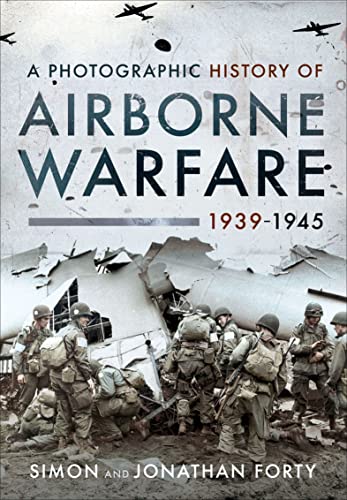
A Photographic History of Airborne Warfare, 1939–1945
by Simon Forty
Popularity
4.27 / 5
* A book's popularity is determined by how it compares to all other books on this website.
Where to buy?
Buy from Amazon* If you buy this book through the link above, we may receive a small commission at no extra cost to you.
A Photographic History of Airborne Warfare, 1939–1945 by Simon Forty
Details
War:
World War II
Biography:
No
Page Count:
497
Published Date:
2022
ISBN13:
9781399011150
Description
Brief Summary
A Photographic History of Airborne Warfare, 1939–1945 by Simon Forty delves into the pivotal role of airborne forces during the Second World War. This comprehensive collection of photographs and narratives highlights the evolution and significant impact of airborne operations throughout various campaigns. From the German success at Fort Eben-Emael to the critical operations carried out by the Allies in Normandy and beyond, the book vividly illustrates the strategic importance of airborne units in shaping the course of the war.
Main Themes and Topics
The book explores several major themes, including the development and deployment of airborne forces, the strategic innovations introduced by these daring operations, and the mixed results they produced. It covers significant events, such as the German triumph in Crete and the subsequent decision by Hitler to halt large-scale airborne assaults. On the other hand, the Allied forces learned and adapted these tactics, leading to successful operations like those on D-Day. The narrative provides insights into the rigorous training, equipment, and execution of airborne missions across diverse theatres, offering a nuanced understanding of their influence on the war's outcome.
Writing Style and Tone
Simon Forty employs a detailed and precise writing style, complementing the historical narrative with a rich array of photographs. The tone is informative and engaging, inviting readers to delve deeper into the fascinating world of airborne warfare. The use of vivid imagery alongside factual descriptions gives the book an immersive quality, making it not only an educational resource but also a captivating read for history enthusiasts.
Criticism
While the book excels in providing a visual and descriptive account of airborne operations, some readers might find the focus on photographs to detract from deeper analytical content. The narrative can occasionally rely heavily on visual evidence, which might not satisfy those seeking an in-depth textual analysis of airborne warfare tactics and strategies.









